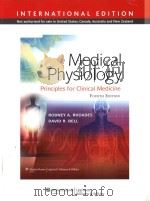《Psychosomatic Medicine The Clinical Application Of Psychopathology To General Medical Problems Secon》
| 作者 | 编者 |
|---|---|
| 出版 | W.B.Saunders Commpanhy |
| 参考页数 | 803 |
| 出版时间 | 1949(求助前请核对) 目录预览 |
| ISBN号 | 无 — 求助条款 |
| PDF编号 | 812525638(仅供预览,未存储实际文件) |
| 求助格式 | 扫描PDF(若分多册发行,每次仅能受理1册) |

PART ⅠGENERAL ASPECTS OF PSYCHOSOMATIC MEDICINE1
CHAPTER ⅠPSYCHOSOMATIC MEDICINE3
Psychosomatic Problems in the Practice of Medicine4
The Present Management of Psychosomatic Problems5
The Illness is"Functional"5
Suspicion of Physical Disease6
Pathologic Curiosities7
The Organic Tradition in Medicine7
Diagnostic Problems in Psychosomatic Medicine8
The"Either-Or"Concept9
Functional and Organic11
The Nature of Emotional Problems12
Psychosomatic Study in Illness12
Organ Language14
Sexual Factors15
Psychotherapy16
What is Psychotherapy?16
Major and Minor Psychotherapy17
Cost of Psychotherapy18
Emotional Illness and Public Health18
Summary19
CHAPTER ⅡPERSONALITY DEVELOPMENT AND PSYCHOPATHOLOGY21
Personality Development21
Psychopathology Established Early in Life22
Anxiety22
The Compulsive Personality27
Organ Language28
Sexuality29
Formation of a Phobia32
Other Manifestations of Anxiety32
The Hysterical Personality32
The Normal Personality33
Capacity for Love34
Adolescence35
Psychopathology37
Neurasthenia37
Hysteria38
Obsessional and Compulsion Neurosis41
Mental Elation and Depression (Manic-Depressive Personality)43
Schizophrenia44
Paranoia45
Differential Diagnosis46
Psychopathology of Psychosomatic Disorders47
Physiological Responses to Emotions47
Relation to Illness49
The Adaptation Syndrome50
Organ Neurosis51
Specificity51
Personality Trends52
The Lessons of Military Experience53
Incidence of Psychosomatic Reactions54
The Concept of Maturity56
Summary58
CHAPTER ⅢPSYCHOSOMATIC DIAGNOSIS59
The Psychosomatic Point of View60
Postulates for Psychosomatic Diagnosis62
Halliday's Six-Point Formula64
Some Background Factors68
Organ Neurosis68
Pseudoheredity70
Emotional Age70
History Taking71
Physician's Qualifications71
The Social Worker and Psychosomatic Diagnosis71
Criticism of Clinical Records72
The Person in the Patient74
Chronologic Development of the Life History77
Explaining"Body Language"to Patients77
The Case Illustration78
The Autobiography78
The Associative Anamnesis79
Definitive Psychosomatic Diagnosis79
Correlation of Life Situation and Symptom Formation80
The System Review82
The Past Medical History89
Family History97
The Summing Up98
Diagnostic Aids98
Casual Remarks98
The Patient's Ideas of the Illness99
Dreams as Diagnostic Aids100
Psychological Testing101
The Forces which Favor Psychotherapy106
Importance of Physical Examination108
Evaluation of the Findings108
CHAPTER ⅣTREATMENT-GENERAL PRINCIPLES OF PSYCHOTHERAPY109
Emotional Growth is Painful109
Emphasis on Organic Disease111
The Personality of the Physician111
Preparation for Psychotherapy112
The Physician as Educator113
Presentation of the Problem of Psychosomatic Illness to the Patient114
The Conversion of Emotion114
Discussion of Personality Disorders115
The Severity of the Neuroses115
Transference116
Psychopathic Personality116
Conversion Hysteria117
Neurasthenia118
Looking for Satisfaction119
The Meaning of Symptoms119
Anxiety Hysteria120
Compulsion Neuroses122
What Precipitates a Neurosis?125
Period of Life125
The Single Woman125
The Married Woman126
Relatives126
Career126
Menopause126
Neurosis in Men126
The Subtlety of the Onset of Neurosis127
Manic-Depressive Psychoses127
Depressive Phase127
Differential Diagnosis128
Suicide129
Convulsive Therapy (Shock Therapy)129
Childhood Background129
Personality Structure130
Treatment130
Schizophrenia131
Hypochondriacal Phase132
Treatment132
Psychopathic Personality133
Direct Expression of Hostility134
Surface Friendliness134
Clinical Considerations135
Ascetics and Eccentrics136
Neurotic Characters Who Cannot Stand Success136
Narcissistic Characters136
Alcohol and Drug Addicts136
Neurotic Criminals137
Character Disturbances in Parents137
Transference139
Repetition of Child-Parent Relationship139
Ambivalence140
Dynamic Factors in Psychotherapy141
Case Illustrating Transference141
National Health Problems and Psychosomatic Illness143
"Fixing"the Neurosis143
The Orthodox Approach to Psychosomatic Problems143
The Physician as a Pathogenic Agent144
The Cost of Psychotherapy144
The Cost of"No Psychotherapy"145
The Role of the General Physician145
General Principles of Management146
The Role of the Social Worker147
The Psychosomatic Concept in Social Case Work147
Cooperation of Physician and Social Worker148
Practical Suggestions149
Social Work as a Career150
CHAPTER ⅤTREATMENT-"NORMAL"PROBLEMS IN PSYCHOTHERAPY151
Problems of Growth and Adjustment151
Feeding Problems152
The Importance of Nursing152
Treatment153
Thumb Sucking154
Bowel and Bladder Training155
Management155
Enuresis156
Treatment156
Tantrums157
Treatment157
Sexuality of Childhood158
Genital Differences158
Infantile Masturbation159
Nightmares160
Treatment160
Other"Normal"Problems of Childhood161
Adolescence161
Masturbation in Adolescence162
Prestige162
Emancipation from Parents163
Struggle with Religious and Ethical Concepts164
Codes for Sexual Behavior164
The Necessity for Cautious Management165
Parents' Concern over Adolescents165
Work Adjustment166
Counseling in Industry168
Courtship and Engagement170
Emotional Immaturity170
Marital Adjustments171
Incompatibility172
Hostility in Marriage Relationship172
Marriage for"Therapeutic"Reasons173
Education in Marriage174
The Sexual Relationship in Marriage175
Divorce176
Research on Divorce176
Marriage Counseling177
Psychotherapy179
Parenthood180
Emotional Background for Invalidism180
The Father as a Contributor to the Child's Emotional Growth181
Education181
Convalescence after Illness or Operation182
Unconscious Wish to Remain Ill182
The Authority of the Physician183
Psychology of Pregnancy and Parturition184
Vomiting of Pregnancy184
Pseudocyesis185
Delivery and Convalescence after Delivery185
Failure in Accomplishment186
Acknowledging Frustration187
Psychosomatic Problems of Aging187
The Role of Chronic Disease188
Old Age and Industry190
Mental Changes in Old Age190
Treatment191
CHAPTER ⅥTREATMENT-SPECIAL PSYCHOTHERAPEUTIC PROCEDURES193
Resistance to Treatment193
Suppressive Therapy194
Terrorism194
Placebos194
Rest195
Suggestion and Persuasion196
Hypnosis196
Religious Assurances198
Expressive Therapy198
Psychoanalysis198
Hypnoanalysis205
Transference and the Physician205
Mental Catharsis206
Psychiatric Counsel207
Group Psychotherapy213
Technic214
Group Psychotherapy as a Community Experiment215
CHAPTER ⅦTRAINING IN PSYCHOSOMATIC MEDICINE217
Ward Round Instruction217
The Psychosomatic Approach in Teaching219
Further Training in Psychosomatic Medicine224
The Specialist224
The General Physician225
PART Ⅱ.SPECIAL APPLICATIONS TO GENERAL MEDICINE AND THE SPECIALTIES227
CHAPTER ⅧTHE CARDIOVASCULAR SYSTEM229
Anxiety and the Heart229
Anxiety and the Normal Heart (Cardiac Neurosis)230
Precipitating Factors230
Symptoms231
Treatment240
Practical Suggestions245
Case 1.Cardiac Neurosis246
Case 2.Cardiac Neurosis247
Low Blood Pressure (Hypotension)250
"Neurocirculatory Asthenia"250
Incidence in Military Service251
Clinical Picture251
The Development of the Syndrome252
"Neurocirculatory Asthenia"in Civil Life252
Differential Diagnosis256
Treatment259
Case 3.Neurocirculatory Asthenia262
Case 4.Neurocirculatory Asthenia265
CHAPTER ⅨTHE CARDIOVASCULAR SYSTEM-EMOTIONAL FACTORS IN ORGANIC HEART DISEASE273
Importance of Emotional Factor273
Evaluating the Emotional Factor274
Problems of Coronary Occlusion275
Psychosis in Cardiac Disease276
Case 5.Congenital Heart Disease and Anxiety Neurosis277
Case 6.Mitral Stenosis and Anxiety Neurosis281
Case 7.Coronary Occlusion285
Case 8.Coronary Occlusion Preceded by Psychic Trauma288
Case 9.Cardiac Neurosis with Bundle Branch Block291
Case 10.Hypertensive-Arteriosclerotic Disease293
Case 11.Somatic Disease (Gastrointestinal and Cardiovascular)300
CHAPTER ⅩTHE CARDIOVASCULAR SYSTEM-ESSENTIAL HYPERTENSION303
Importance of Hypertension304
Pathogenesis304
Psyche and Hypertension305
Experimental Observations306
Summary of Pathogenesis307
Clinical Picture309
The Problem in Medical Practice309
Psychosomatic Symptoms310
Treatment313
Psychosomatic Aspects of Treatment314
Personality Studies315
Hostility and Aggression316
Psychosomatic Observations316
On"Bringing the Blood Pressure Down"318
Redefining Objectives318
Some Practical Points318
Conclusions320
Case 12.Early Essential Hypertension.Recurrent Attacks of Acute Hypertension with Hypertensive Encephalopathy321
Case 13.Hypertension and Anxiety327
Case 14.Moderately Advanced Hypertensive-Vascular Disease330
Case 15.Advanced Hypertensive-Vascular Disease334
Case 16.Hypertension and Anxiety336
Case 17.Hypertension and Anxiety-Hypertensive Encephalopathy344
Case 18.Hypertension and Anxiety-Spontaneous Subarachnoid Hemorrhage347
CHAPTER ⅪTHE GASTROINTESTINAL SYSTEM351
Functional Digestive Disturbances351
False Sense of Accuracy351
Organic Treatment352
Organ Language352
Emotional Trends353
Gastric Problems353
Bowel Problems354
Incidence of Functional Disturbances of the Gastrointestinal Tract355
Chronic Dyspepsia356
Psychosomatic Study358
The Approach to a Digestive Problem359
The Clinical Picture of Gastric Dysfunction361
Case 19.Constipation362
Case 20. "Nervous Indigestion"364
Case 21.Syphilis of the Central Nervous System Thought to be"Nervous Indigestion"367
Nervous Vomiting369
Case 22.Nervous Vomiting369
Mental Depression with Digestive Symptoms372
Case 23.Two Attacks of Mild Depression with Digestive Symptoms372
Case 24.Castrointestinal Symptoms;Character Problem.Unsuitable for Psychotherapy374
Case 25.Pain Right Lower Quadrant;Extreme Fatigue;Low Fever of Obscure Origin377
CHAPTER ⅫTHE GASTROINTESTINAL SYSTEM (Continued)383
Chronic Appendicitis383
Chronic Invalidism383
Significance of Acute Attack384
Case 26."Chronic Appendicitis"385
Case 27.The Chronic Gastrointestinal Invalid395
Case 28.Mental Depression402
Case 29.Chronic Dyspepsia407
Case 30.Mucous Colitis ("Irritable Colon")412
Ulcerative Colitis417
Emotional Factors417
Personality Study418
Dependency418
Relation to Psychosis419
Bereavement as Precipitation Factor419
Combined Therapy420
Physical and Emotional Immaturity420
Case 31.Ulcerative Colitis421
CHAPTER ⅩⅢTHE GASTROINTESTINAL SYSTEM (Concluded)424
Cardiospasm424
Prevailing Ideas of Etiology424
Personality Study424
The Specific Psychic Situation425
Psychosomatic Approach425
Case 32.Cardiospasm426
Anorexia Nervosa428
Case 33.Anorexia Nervosa428
Peptic Ulcer433
Prevailing Views433
Theories of Etiology434
Clinical Observations435
Experimental Observations435
Conscious Emotional Factors436
Unconscious Mental Forces in the Etiology of Peptic Ulcer438
Case 34.Duodenal Ulcer440
Case 35.Duodenal Ulcer442
Summary of Case Material445
Conflict over Marriage446
Relation of Psychic Forces of Ulcer Formation446
Principles of Psychotherapy in Ulcer Patients446
CHAPTER ⅩⅣENDOCRINE SYSTEM AND METABOLISM449
The Emotional Life and Ovarian Function450
Scientific Psychosomatic Study451
The Menopausal Syndrome453
The Menopause and the Climacteric453
Estrogenic Treatment454
Suggestion from Treatment455
Previous Personality Disturbances456
Need for Further Study456
Case 36.Psychic Factors in the Menopausal Syndrome457
Waiting Too Long for Help459
The Male Climacteric460
All Ill-defined Syndrome460
Need for Psychotherapy462
A Period of Adjustment463
Seeking Quick Cure463
Psychosomatic Observations464
Case 37.The Male Climacteric?465
Preadolescent Hypogonadism465
Puberty467
Case 38.Masturbation Problem in an Adolescent468
Chronic Masturbation470
Nightmares470
Anxiety Develops Early471
Case 39.Anxiety State of Puberty471
CHAPTER ⅩⅤENDOCRINE SYSTEM AND METABOLISM (Continued)473
The Relation of Disorders of the Thyroid Gland to the Emotions473
Preceding Emotional Disturbances473
Psychosomatic Observations474
Psychological Invalidism in Thyroidectomized Patients476
Case 40.Hyperthyroidism477
Case 41.Nodular Goiter with Anxiety Symptoms478
Case 42.Nodular Goiter;Thyroidectomy;Neurasthenia486
Case 43.Early Schizophrenia (?);Anxiety Attacks491
Case 44.Neurotic Invalidism-Neurasthenia Following Childbirth496
Addison's Disease and the Adrenal Syndrome505
"Low Blood Pressure"505
Chronic Fatigue505
Case 45.Neurasthenia with Somatic Disease506
CHAPTER ⅩⅥENDOCRINE SYSTEM AND METABOLISM (Concluded)511
Anorexia Nervosa511
Simmonds' Disease511
Differential Features512
Functional Pituitary Depression512
Psychic Traits512
Clinical Findings513
Principles of Treatment513
Case 46.Anorexia Nervosa514
Diabetes Mellitus521
History522
Emotional Factors522
Expereimental Studies523
Personality Studies523
Psychologic Problems in Children528
Psychotherapy529
Case 47.Diabetes Mellitus531
Spontaneous Hypoglycemia (Hyperinsulinism)534
Psychic Manifestations535
Case 48.Diabetes with Anxiety Attacks,Thought to be Hypoglycemia535
Case 49.Functional Hypoglycemia536
Obesity539
Intake of Food539
Personality Studies541
Psychological Aspects of the Treatment of Obesity542
Case 50.Obesity and Reduction Problem545
CHAPTER ⅩⅦTHE GENITO-URINARY SYSTEM AND THE SEXUAL FUNCTION552
Instinctual Forces552
Genital Functioning553
Education in Sexuality553
Frigidity and Impotence554
Thwarted Sexual Development554
Marriage and the Sexual Function554
Psychosomatic Background of Impotence and Frigidity555
Orgastic Pleasure556
Causes of Frigidity and Impotence560
The"Clumsy Male"562
Hostility Toward the Partner562
Conflicting Loves (Usually Unconscious)564
Psychosomatic Problems of Frigidity566
The Abuse of Surgery566
Emotions and Menstruation567
Menstrual Taboos568
Anxiety and Superstition568
Childhood Fantasies569
Effect on Children569
Hostility570
Dysmenorrhea570
Clinical Aspects570
A General Problem571
Psychological Study571
Nature of Sexual Fantasies572
Premenstrual Tension572
Case 51.Premenstrual Tension573
Amenorrhea574
Unconscious Influences575
Leukorrhea575
Psychological Factors576
Functional Urinary Disturbances576
A Substitute for Sexual Activity577
Aggressive Component577
Lack of Emotional Control577
CHAPTER ⅩⅧTHE GENITO-URINARY SYSTEM AND THE SEXUAL FUNCTION (Concluded)579
Treatment579
Disturbances of Sexual Functioning579
Eliciting History579
Physician's Attitudes580
Contraception581
The Fallacy of Pregnancy as a Cure for Neurosis584
Reeducation584
Psychological Factors in Urological Disorders587
Dysmenorrhea589
Case 52.Dysmenorrhea589
Case 53.Frigidity in a Patient without Deep Conflicts591
Case 54.Frigidity with Severe Neurosis,Demanding Longer Therapy593
Case 55.Impotence595
Case 56.Impotence597
Case 57.Premature Ejaculation600
Case 58.Premature Ejaculation,Needing More Intensive Therapy601
CHAPTER ⅩⅨTHE RESPIRATORY SYSTEM603
The Effect of Emotions on Breathing603
Analogy to Gastrointestinal Tract603
Neurosis and Respiratory Tracings604
Sighing Respirations in Anxiety States605
Physiological Mechanisms606
Functional Respiratory Disorders607
Case 59.Neurotic Dyspnea607
Case 60.Anxiety Attacks;Hyperventilation610
Emotional Factors in Common Colds612
More Complex Psychological Problems613
Anxiety and Depression614
"Feeding to Cold"614
Relation to allergy614
Emotional Factors in Pulmonary Tuberculosis615
High Incidence of Neurosis615
Personality Study616
Social Work and Tuberculosis617
Case 61.Tuberculophobia-Healed Tuberculosis618
Case 62.Tuberculophobia-Fatigue and Slight Fever625
CHAPTER ⅩⅩTHE RESPIRATORY SYSTEM (Concluded)627
Bronchial Asthma627
Diagnosis627
Etiology627
Emotional Factors in Bronchial Asthma628
Personality Structure of Children Suffering from Asthma629
The Site of Selection for Organ Neuroses631
Parent-Child Relations632
Further Psychoanalytic Observations632
Summary634
Case 63.Asthma635
Case 64.Bronchial Asthma640
CHAPTER ⅩⅪTHE CENTRAL NERVOUS SYSTEM645
Insomnia645
Insomnia and Anxiety645
Insomnia Not an Isolated Symptom646
Treatment646
Case 65.Insomnia647
Weakness and Faintness649
Significance of the Symptoms649
The Mechanism of Syncope650
Vasodepressor Syncope650
Hysterical Fainting651
Case 66.Hysterical Fainting651
Case 67.Weakness and Fainting652
Headache653
Etiology654
Mechanism of Headache656
Intracranial Pressure657
Arterial Pulsation657
Muscular Contractions657
Character of Pain658
Diagnostic Test658
Case 68.Headache of Emotional Origin661
Migraine663
Clinical Features664
Mechanism664
Personality Features665
Emotional Immaturity665
Relation to Hypertension666
Psychoanalytic Observations666
Rorschach Tests667
Medical Observations667
Case 69.Migraine;Thought to Be Allergic;Good Response to Psychotherapy668
Case 70.Migraine;Childhood Asthma;Psychological Conflict in Regard to Mother670
Epilepsy672
Predisposition673
Treatment673
Marriage in Epilepsy674
Heredity675
Case 71.Epilepsy676
Delirium677
Symptoms678
Electroencephalographic Study678
Treatment678
Organic Brain Disease Simulating Neurosis679
Case 72.Brain Tumor and Functional Symptoms679
Case 73.Organic and Psychic Disease Coexisting685
CHAPTER ⅩⅫEAR AND EYE688
Psychosomatic Aspects of Ear Disorders688
Vertigo688
Case 74.Vertigo689
Case 75.Vertigo697
Ocular and Visual Disturbances698
Anxiety and the Eyes698
Asthenopia699
Night-blindness699
Miners' Nystagmus700
Central Angiospastic Retinopathy700
Glaucoma701
Treatment702
CHAPTER ⅩⅩⅢSKIN DISORDER AND ALLERGIES704
Psychosomatic Aspects of Skin Disorders704
Attitude of Dermatologists704
Concepts of Multiple Causation704
Neurodermatitis705
Case 76.Neurodermatitis;Good Response to Psychotherapy708
Case 77.Severe Acne-Improvement with Psychotherapy710
Urticaria712
Pruritus712
Pruritus Ani713
Hostility and Skin Disorders713
Necessity for Psychotherapy714
The Relations Between Emotion and Allergy715
The Psychosomatic Point of View716
The Common Cold716
Hay Fever717
Asthma719
Urticaria719
Exhibitionism719
General Theory719
The Child's Longing for the Parent720
Personality Trends721
Cooperative Therapy723
Conclusions723
CHAPTER ⅩⅪⅤDENTISTRY,ARTHRITIS AND ORTHOPEDIC PROBLEMS725
Psychosomatic Aspects of Dentistry725
Dental Problems of Childhood725
Thumb-Sucking726
Relation of Dentistry to Emotional Aspects of Surgery726
Psychologic Preparation for Surgical Operations728
Atypical Neuralgia729
Personality Structure729
Chronic Arthritis731
Focal Infection732
Polypharmacy732
Social Implications of Chronic Arthritis734
Clinical features734
Sociological Factors735
The Social Worker and Arthritis737
Emotional Factors738
Personality Studies738
Rorschach Studies739
Summary740
Osteoarthritis740
Nonarthritic Rheumatism ("Fibrositis")741
Clinical Findings741
Psychological Symptoms741
Psychodynmaics742
Previous Studies742
Orthopedic Problems743
The Low Back Problem744
Intractable Pain Syndromes746
The Accident Habit748
Case 78.A Purposeful Accident749
Case 79.Low Back Problem751
Psychosomatic Aspects of Physical Medicine752
Spas753
Physician Relationships753
Practical Suggestions754
APPENDIX (Orientation Chart for Teaching Psychosomatic Medicine)755
REFERENCES759
SELECTED REFERENCES770
INDEX773
1949《Psychosomatic Medicine The Clinical Application Of Psychopathology To General Medical Problems Secon》由于是年代较久的资料都绝版了,几乎不可能购买到实物。如果大家为了学习确实需要,可向博主求助其电子版PDF文件(由 1949 W.B.Saunders Commpanhy 出版的版本) 。对合法合规的求助,我会当即受理并将下载地址发送给你。
高度相关资料
-
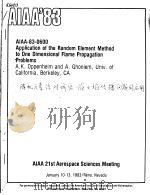
- APPLICATION OF THE RANDOM ELEMENT METHOD TO ONE DIMENSIONAL FLAME PROPAGATION PROBLEMS
- 1983 AIAA 21ST AEROSPACE SCIENCES MEETING
-
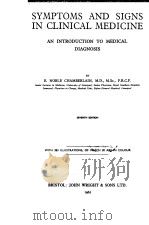
- WYMPTOMS AND SIGNS IN CLINICAL MEDICINE AN INTRODUCTION TO MEDICAL DIAGNOSIS SEVENTH EDITION
- BRISTOL:JOHN WRIGHT AND SONS LTD.
-
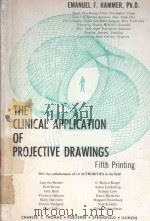
- THE CLINICAL APPLICATION OF PROJECTIVE DRAWINGS
- 1958 CHARLES C THOMAS PUBLISHER
-

- PSYCHOSOMATIC MEDICINE
- 1943 W.B.SAUNDERS COMPANY
-

- SIGNIFICANCE OF THE BODY FLUIDS IN CLINICAL MEDICINE
- 1955 CHARLES C THOMAS PUBLISHER
-

- THE CLINICAL APPLICATION OF HORMONE ASSAY
- 1958 E.& S.LIVINGSTONE LTD
-

- MEDICAL-SURGICAL NURSING:ASSESSMENT AND MANAGEMENT OF CLINICAL PROBLEMS
- 1987 MCGRAW-HILL BOOK COMPANY
-
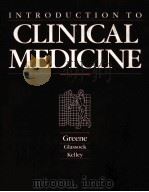
- Introduction to clinical medicine
- 1991 B. C. Decler
-

- THE CLINICAL APPLICATION OF PSYCHOLOGICAL TESTS
- 1948 DAVID RAPAPORT
-
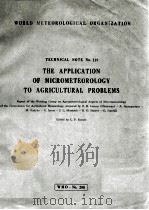
- TECHNICAL NOTE NO. 119 THE APPLICATION OF MICROMETEORLOGY TO AGRICULTURAL PROBLEMS
- 1972 SECRETARIAT OF THE WORLD METEOROLOGICAL ORGANIZATION - GENEVA - SWITZERLAND
-

- SUBCONSCIOUS SELLING:AN APPLICATION OF AUTOSUGGESTION TO THE PROBLEMS OF SALESMANSHIP
- 1923 MARKETING PUBLISHERS LIMITED
-
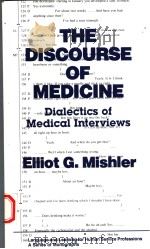
- THE DISCOURSE OF MEDICINE DIALECTICS OF MEDICAL INTERVIEWS
- 1984 ABLEX PUBLISHING CORPORATION
提示:百度云已更名为百度网盘(百度盘),天翼云盘、微盘下载地址……暂未提供。➥ PDF文字可复制化或转WORD


